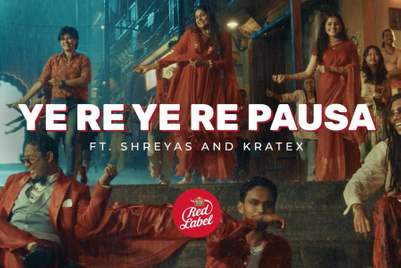.jpg&h=570&w=855&q=100&v=20250320&c=1)
The role of packaging as a tool for consumer health literacy and transparency was the central theme of a presentation by Revant Himatsingka, popularly known as the Food Pharmer, at the PackMach Asia Expo and DrinkTec India 2025.
Himatsingka, who left his job at McKinsey to launch the Label Padhega India campaign, argued that understanding food labels is a skill more critical than coding and introduced principles that he believes will define the future of food packaging.
He stated that while many educated consumers lack health literacy, the solution lies in mandatory, honest, and easily decipherable and accessible information on packaging. Based on his own brand, Only What’s Needed, Himatsingka presented key fundamentals for packaging transformation, focusing on making nutritional information prominent and accessible.
Food Pharmer’s version of the future of packaging
Starting with the radical step of displaying the comprehensive nutrition label on the front of the package, Only What's Needed reverses the conventional marketing-first approach and makes nutrition the primary visual focus.
Furthermore, the packaging uses a visibly large font size and voluntarily showcases the exact percentage of every ingredient in large font size, a measure that exceeds current FSSAI requirements and helps eliminate ambiguity for the consumer.
In addition, recognising limited English literacy across India, the packaging includes a scannable QR code that translates the label into various regional languages, with a future addition planned for sign language.
Initially, the packaging also included a Braille label on every pack to ensure accessibility for the visually impaired, a feature which is now optional due to concerns about material waste.
To foster consumer trust, the brand openly displays its entire pricing breakdown on its website checkout page, a difficult step for companies with high margins. In addition, instead of dense text, the ingredients are visually broken down using a pie chart, which provides an immediate and clear understanding of component ratios, allowing consumers to differentiate healthy products.
The packaging strictly avoids all food images to prevent creative visualisation, ensuring purchasing decisions are based only on the facts presented.
Finally, the packaging includes a QR code which redirects to a free masterclass on how to read a label to equip consumers with the necessary health literacy to understand ingredients and safe limits for sugar and sodium.
The brand also conducts seven different tests on every batch, including heavy metals and protein claims, particularly relevant in the protein market, to ensure the product exactly matches the on-pack claims.
On health rating systems
Himatsingka also discussed broader initiatives to drive transparency, referencing systems like the Nutri-Grade used in Singapore. To achieve a similar effect without government mandates, he launched TruthIn, an app that allows users to scan any food barcode and receive a health rating (on a 1 to 5 scale). Himatsingka mentioned that this system is also being extended to skincare products.
He also mentioned plans for a ‘Food Pharmer Approved’ list, potentially integrated as a filter on eCommerce platforms, to help consumers identify healthy products and “imperfect alternatives” to ensure healthier choices are accessible to a wider demographic.
- This article was originally published in WhatPackaging.


.jpg&h=334&w=500&q=100&v=20250320&c=1)


.jpg&h=334&w=500&q=100&v=20250320&c=1)









.jpg&h=268&w=401&q=100&v=20250320&c=1)
.jpg&h=268&w=401&q=100&v=20250320&c=1)
.png&h=268&w=401&q=100&v=20250320&c=1)
.jpeg&h=268&w=401&q=100&v=20250320&c=1)

